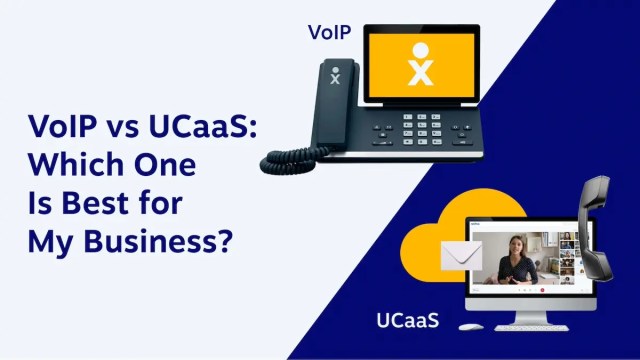From handling client negotiations to helping employees engage with each other, communication is at the heart of any organization’s success.
But with so many different communications systems, selecting the right platform can be tricky. Ultimately, it all depends on your organization’s specific needs.
Here, we discuss two communications systems in depth: Voice over Internet Protocol (VoIP) and Unified Communications as a Service (UCaaS). By examining the strengths of each technology, we will help you decide which platform will work best for your business.
Intro to VoIP & UCaaS
As of 2023, 40% of US employees work at least one day a week from home.1 Research also shows that remote worker productivity depends heavily on organizational communication tools. This means that optimizing your workplace’s communication infrastructure is vital for ongoing productivity.
What is VoIP?
Voice over Internet Protocol (VoIP) is a technology that allows users to make voice calls using an internet connection instead of a regular (or traditional) phone line. VOIP’s technology is based on converting sound into digital packets and transfers them over the internet.
This offers it the flexibility to integrate with other services over the internet, such as email, e-fax, and video conferencing.
How VoIP Works:
- Analog voice signals are captured by a microphone, then converted into digital format using an analog-to-digital converter (ADC).
- The digital voice data is then divided into packets. Each packet includes a portion of the voice signal as well as header information that ensures the data can be properly routed and reassembled.
- Packets are sent over an IP network to the recipient. This network can be any data network including the internet, a direct IP connection, or a virtual private network (VPN).
- At the receiving end, the packets are reassembled, converted back into an analog signal (via a digital-to-analog converter), and played back so the recipient can hear the sender’s voice.
Key Features of VoIP
Basic Features:
- Call Forwarding: Automatically reroute calls to another number.
- Caller ID, Call Waiting, and Voicemail: Standard features that enhance call management.
- Voicemail to Email Transcription: Converts voicemail messages into text and sends them as an email.
Advanced Features:
- Interactive Voice Response (IVR): Automated systems that interact with callers and route calls based on the responses.
- Call Queues: For handling high volumes of incoming calls efficiently.
- Direct Inward Dialing (DID): Allows callers to reach a user directly without navigating a menu or going through a receptionist.
For small businesses, VoIP stands above traditional phone lines because it’s more affordable, especially for long-distance calls, and it’s versatile because it allows users to make and receive VoIP calls from any internet-connected location.
What is UCaaS?
UCaaS is a streamlined solution that uses the cloud to deliver phone, chat, video, and messaging, all in one platform. Often shortened to “UC,” unified communications optimizes team and customer interactions into a single cloud-hosted system that employees and organizations can access easily from any geographical location.
UCaaS is designed to provide businesses with flexible, scalable communication solutions that can be integrated seamlessly into their existing operations. Its benefits go well beyond those of traditional VoIP services, as it offers more features that enhance collaboration and productivity.
In addition, UCaaS solutions also scale with business growth and integrate with different business applications, enabling more connected and efficient workflows.
VoIP and UCaaS Differences
While both VoIP and UCaaS are cloud-based communication solutions, they serve distinct purposes.
VoIP specializes in voice calling, whereas UCaaS offers a comprehensive communications solution, including video conferencing, instant messaging, and other collaborative tools and voice capabilities.
In terms of cost savings, VoIP systems present a more budget-friendly option compared with UCaaS solutions.
| Feature | VoIP | UCaaS |
|---|---|---|
| Primary offering | Primarily focuses on delivering voice communications via an internet connection. | Integrates multiple communication methods into a single platform, including voice, video conferencing, messaging, and more. |
| Cost | Generally lower cost compared to traditional telephony, primarily paying for internet service and VoIP services. | Higher cost for more features. |
| Ease of Setup | Straightforward setup | Steeper learning curve |
| Communication Tools | Desk phones, softphones | Desk phones, softphones, web-based apps, and CRM/email integrations |
| Integrations | Limited | Comprehensive (Designed to integrate seamlessly with other business tools (CRMs, email, productivity apps, etc.). |
| Maintenance and Updates | Maintenance can be lower as it might not require frequent updates or complex infrastructure. | As a service model, all updates, maintenance, and infrastructure management are handled by the service provider, reducing IT burden. |
| Deployment | Can be deployed as standalone systems or as part of broader UC solutions. | Typically delivered as a comprehensive, cloud-based solution that includes VoIP among other services. |
| Scalability | Scalable to a degree, but primarily in the capacity of handling more voice calls. | Highly scalable across various communication channels, easy to add or remove services or users as needed. |
However, UCaaS justifies its higher price point with a broader set of features and seamless integrations with business applications, offering more value for businesses seeking an all-encompassing communication tool.
Ease of setup and use is another consideration; VoIP is relatively simple, which gives it an edge for quick implementation, making it the straightforward choice for voice communication needs.
UCaaS, while more complex, delivers the advantage of unifying all communication channels into one platform, potentially streamlining workflows after climbing the initial learning curve.
Comparing VoIP & UCaaS Features
Buyers in the market for a communications system must decide between a VoIP or UCaaS solution. Understanding the features of each solution allows you to assess which are must-haves for your business.
Noteworthy VoIP features
Key VoIP features center on facilitating easier phone calls and managing incoming calls:
- Phone calls: VoIP phone systems let businesses make and receive high-quality voice calls over the internet, made across the public switched telephone network (PSTN). This ensures businesses can make calls from traditional landline phone numbers.
- Auto attendant: Auto attendant features facilitate screening and directing incoming calls, providing menu options to help callers reach their intended department or contact within the organization.
- Softphone capabilities: Softphone applications for mobile devices and desktops, such as the NextivaONE, allow employees to make and receive calls, check voicemail, send and receive text messages and SMS, and use other VoIP features on personal devices.
- Call forwarding: Call forwarding and call routing functionality help businesses redirect incoming calls to alternate numbers, should the intended recipient not be at their desk phone.
- Conference calling: VoIP service providers can host multiparty conference calls, making it easy to conduct group discussions without needing third-party conference call services such as Zoom or Google Meets.
- Call recording: Calls can contain extensive amounts of information that are impossible to recall unless the call is recorded. Call recording and transcription features allow users to replay calls later, ensuring they get all the necessary information.
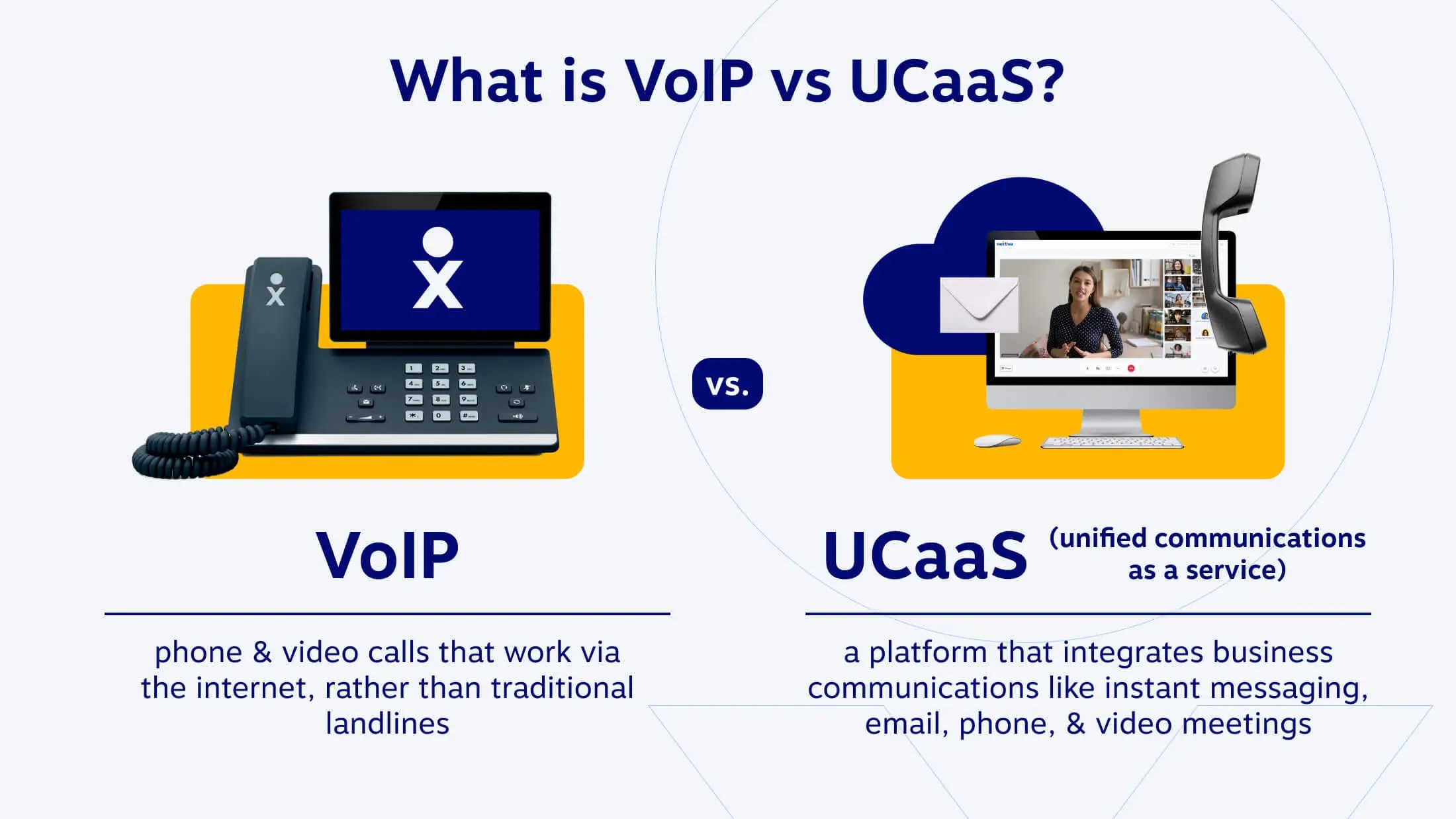
“As times change, we want the ability to tell our employees to go home and work. […] If you have the client installed on your laptop or your cell phone, you don’t have to do anything. Just work from home and it’s as if you’re receiving or making a call from the office.”
Tom Rybak
Top UCaaS features
UCaaS providers focus on offering users a comprehensive suite of features that deliver an all-in-one communications system, capable of handling the business needs of organizations of all sizes.
UCaaS includes all the core features of VoIP and these features in one fully integrated platform:
- Video conferencing: A standout feature of UCaaS is its robust video conferencing capability, allowing for real-time video calls with multiple participants, including screen sharing and collaborative tools, facilitating face-to-face meetings regardless of location and time zone.
- Team messaging: UCaaS platforms also offer team messaging functions, enabling one-on-one or group discussions between employees over various chat channels. This streamlines communication within teams and projects, promoting a faster and less formal interaction than email.
- Presence information: The “presence management” feature in UCaaS systems provides real-time status updates, indicating whether colleagues are available, busy, or away. This helps employees decide the best time to reach a colleague for a quick reply.
- Business application integrations: Perhaps one of the most popular features of UCaaS is its ability to integrate with other business applications, such as Customer Relationship Management (CRM) systems and project management tools. Integrations such as these allow users to manage all their communications from the same applications they use daily, boosting productivity and efficiency.

These main UCaaS features contribute towards a more streamlined and optimized communications experience. Together, UCaaS provides a solid foundation for communication.
Similarities Between VoIP and UCaaS Solutions
First off, it’s important to understand that VoIP and UCaaS are cloud-based services. Both communications solutions facilitate the remote and flexible nature of modern work, allowing teams to make and receive calls from anywhere.
These similarities lay the foundation for a more connected, efficient workplace, regardless of location.
| Feature | VoIP | UCaaS |
|---|---|---|
| Cloud-based | Yes, when not on-premises | Yes |
| Remote-work friendly | Yes, most of the time | Yes |
| Communication features | Calls, voicemail, mobile phone applications | Calls, voicemail, mobile phone applications, video calling, team messaging, third-party application integrations |
| Security | Requires secure data transmission methods like TLS and SRTP. | Uses similar security protocols for protecting all forms of communication data. |
| Service model | Often provided as a service by telecommunications and IT providers. | Delivered as a service, typically including a broader range of communication tools beyond just voice. |
Popular VoIP & UCaaS Use Cases
Best uses of VoIP
Mobility and Remote Work
The flexibility of VoIP is particularly beneficial for remote work setups. Employees can access their business phone systems from anywhere with an internet connection, using either specialized VoIP handsets or apps installed on smartphones or computers. This mobility ensures that employees remain connected and productive regardless of their physical location.
Additionally, VoIP applications on personal devices allow employees to make and receive calls using their business numbers, maintaining professionalism without needing multiple devices.
Enhanced Communication Features
VoIP technology provides a series of advanced communication features that add significant value for small—to medium-sized businesses. One such feature is converting voicemails directly to email, allowing employees to receive and manage their messages more efficiently.
The call forwarding feature also ensures that calls can be redirected to mobile phones, maintaining connectivity even when employees are away from their office desks.
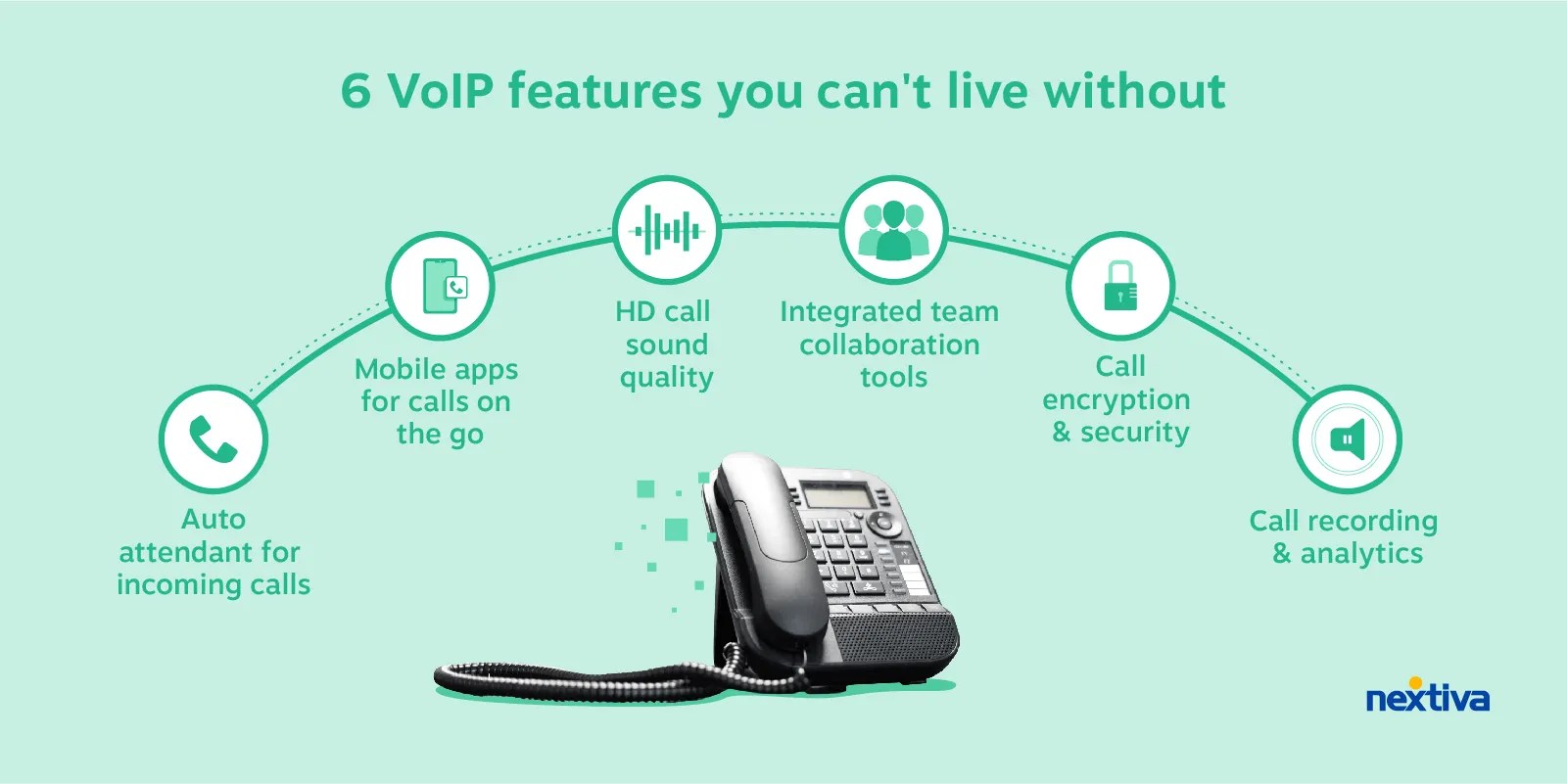
Cost-Effective Communication Solution
For organizations looking to optimize their communication systems without a substantial upfront investment, VoIP presents a cost-effective solution. It allows businesses to streamline their communication operations with a lower cost of entry compared to traditional phone systems, which often come with higher installation and maintenance expenses.
Budget-Friendly International Calling
VoIP is particularly beneficial for businesses that engage in frequent international communication. Traditional international calling can be expensive, but VoIP services often include international calls at significantly reduced rates or even within fixed monthly fees, making it a budget-friendly option for global communication.
Access to Advanced Telephony Features
Even small businesses that need basic telephony services can benefit from advanced features that VoIP provides. Features such as auto attendants enhance customer service by automatically answering calls and directing them to the appropriate contact within the organization.
Additionally, conference calling features facilitate multi-participant calls, making it easier to coordinate discussions with team members or clients across different locations.
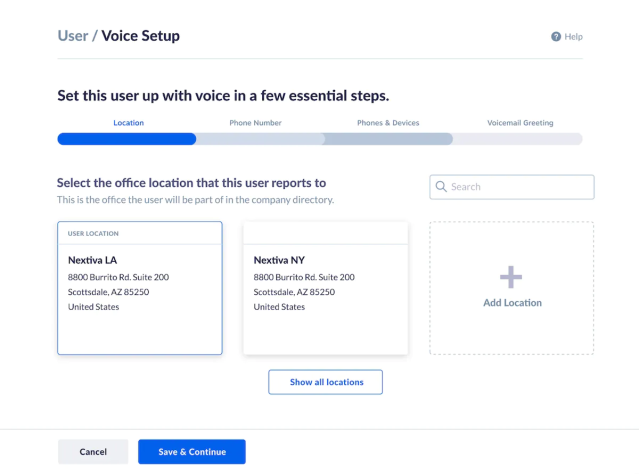
Best uses of UCaaS
Comprehensive Communication Integration
UCaaS is particularly suited for larger businesses or enterprise companies that require a robust, all-in-one communication solution. This service integrates telephony, video conferencing, instant messaging, and file sharing into a single platform, facilitating a unified approach to managing all forms of communication.
UCaaS also simplifies the technology stack and reduces the need for multiple disparate systems, which can lead to significant improvements in operational efficiency.
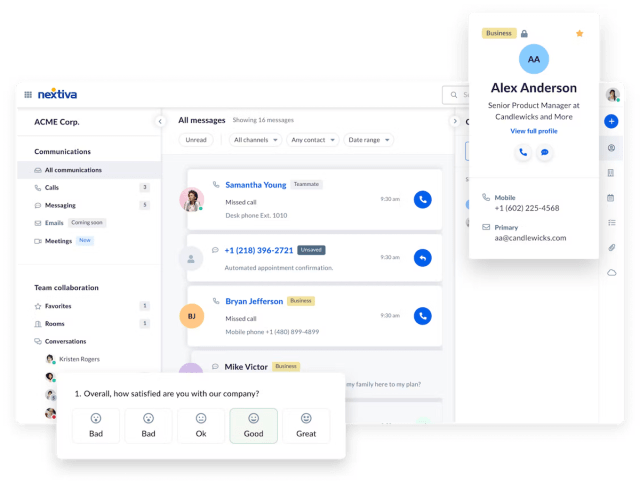
Seamless Connectivity Across Platforms
UCaaS is designed to provide seamless connectivity among employees and clients, ensuring a consistent user experience across various communication channels. Whether team members are using video, voice, text, or sharing files, the experience remains uniform, reducing confusion and enhancing user adoption rates. This consistency is crucial for maintaining professional communication standards and improving engagement during virtual meetings and collaborative sessions.
Collaboration Tools for Remote and Global Teams
For organizations with remote workers or teams spread across different time zones, UCaaS offers an array of tools that support collaboration irrespective of physical locations. Features such as real-time presence information help colleagues know who is available at any given moment, while team messaging allows for continuous, real-time communication.
These tools help bridge the gap between different locations and time zones, effectively bringing remote teams together as if collaborating in the same office space.
Enhanced Team Collaboration and Project Management
UCaaS is particularly valuable for organizations that rely on intensive team collaboration, such as technology companies, design firms, consultancies, and businesses operating call centers or contact centers. The integration of communication tools with workflow and project management capabilities enables teams to stay connected and coordinated.
This synergy is critical in environments where team members frequently share and discuss large volumes of information and need to make quick, informed decisions based on real-time data.
Integration with Business Applications
UCaaS excels in environments requiring tight integration with other business applications, such as CRM systems, email, and project management software. This integration allows for streamlined workflows where communication occurs in relation with critical business processes.
For instance, sales teams can access customer data and history while on a call, providing personalized customer service and improving response times. Similarly, project teams can update tasks and share status updates more efficiently, ensuring that everyone on the team has the latest information at their fingertips.
Real-Time Insights and Customer Interaction
A significant advantage of UCaaS is its ability to provide real-time customer insights, which can be leveraged to enhance service delivery and customer engagement. Integrating communication functionalities with analytics tools allows businesses to gain a deeper understanding of customer behaviors and preferences. This integration enables companies to tailor their interactions and services more effectively, ultimately leading to improved customer satisfaction and loyalty.
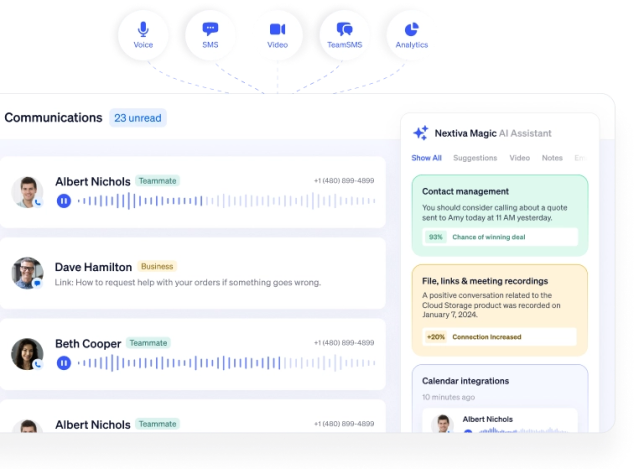
Related: The Best BlueJeans Alternative to Consider (+ 4 Corporate Meeting Platforms)
VoIP vs. UCaaS: Which Is Right for You?
Deciding between VoIP and UCaaS depends on several key considerations, each tied closely to your business’s specific needs, goals, and resources.
- UCaaS is best: If your business requires a versatile communication system that goes beyond voice calls and integrates smoothly with other business tools, UCaaS is likely the best fit.
- VoIP is best: If the primary need is for reliable internet-based voice communication with some additional features, and budget is a significant consideration, VoIP may be the right choice for you.
This decision should be made by assessing your business’s communication needs, user requirements, and financial capacity, as discussed in depth below.
💰 What is my budget?
Budget is one of the primary considerations that organizations consider when deciding which technology they should invest in.
With this in mind, UCaaS is a pricier option than VoIP because it offers more features and capabilities. It consolidates various communication and collaboration tools into one centralized system, which leads to savings in the long run by replacing multiple redundant tools and streamlining operations.
While VoIP is initially more affordable, offering a straightforward solution for internet-based telephony, UCaaS presents a comprehensive platform that can effectively replace entire suites of communication software, justifying its higher price point with added value, especially over the long term.
💪 What communication features are most important to me?
Consider the communication features that are vital for your business. If the goal is to simply modernize voice calls, VoIP technology will serve you just fine, providing internet telephony with some advanced features such as call forwarding and voicemail to email.
However, if your business requires a complete communications platform that includes video meetings, team messaging, and presence management alongside voice capabilities, then UCaaS is most certainly the better choice.
🙋Who will be using the system?
Identifying who will use the system and for what purpose will also guide your decision.
Suppose the system is primarily for customer support or service teams that handle a high volume of calls. In that case, VoIP’s efficient call management functionality will be exactly what you need to deliver an outstanding customer experience.
On the other hand, if the system needs to support internal communication across sales, product, and other teams in addition to customer service, UCaaS’s diverse feature set and collaborative tools will be a more appropriate and beneficial choice.
🧩 Do I need to integrate my communications with other business applications?
Finally, buyers weighing up the decision between a VoIP and UCaaS solution must consider their need for integration with other business applications.
UCaaS platforms are designed with integration in mind, offering compatibility with a wide array of business apps such as CRM systems, project management tools, and productivity suites.
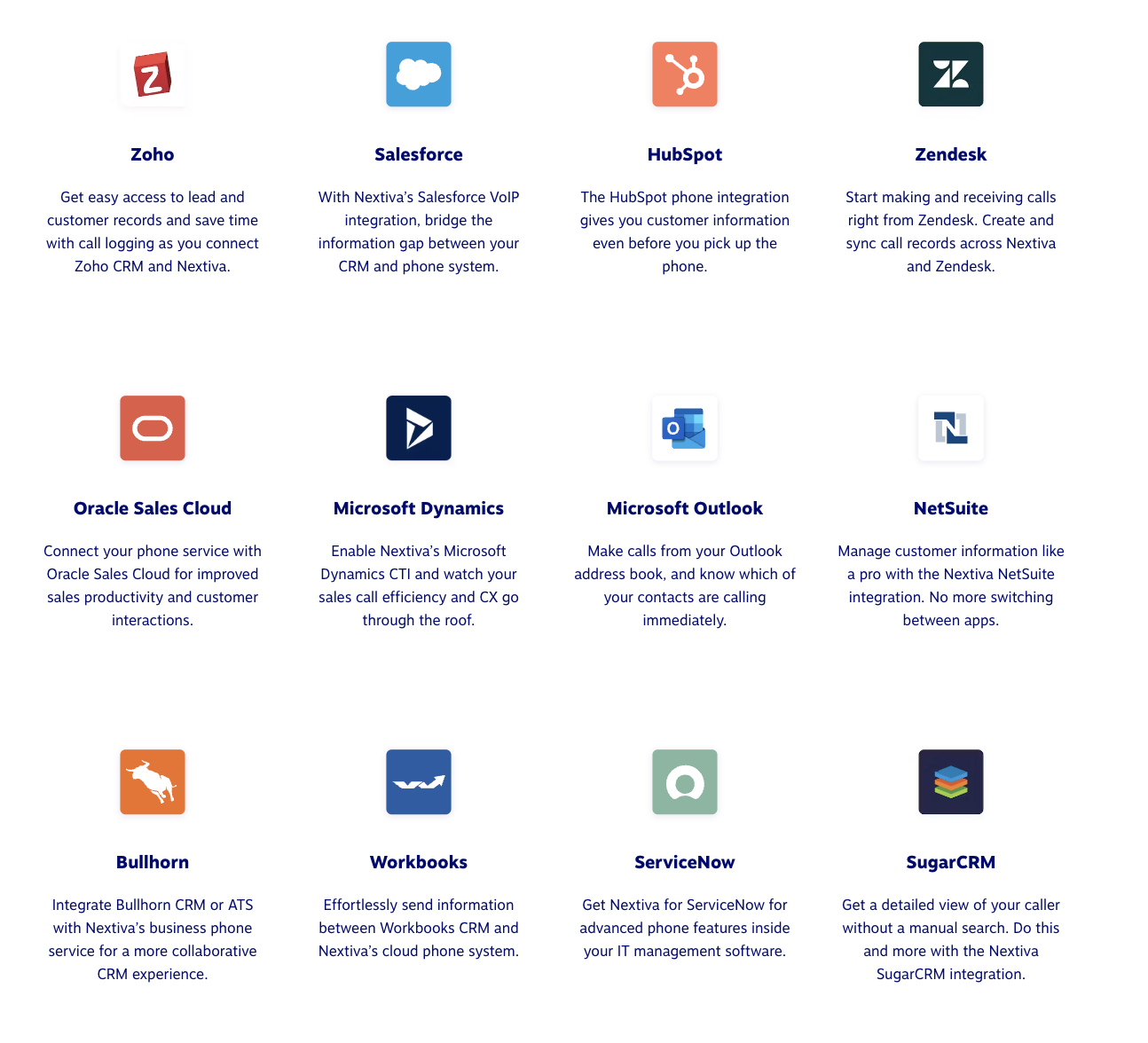
This enhances workflow automation and data accessibility, providing a more seamless experience for users. Comparatively, VoIP systems offer limited integration ability.
Is your organization ready for UCaaS? Take the UCaaS Readiness Quiz — and see how you score. One of our experts will follow up and suggest the best solution for your business.
✅ Whatever You Choose, Nextiva Has You Covered
Selecting the right phone service provider for your organization is crucial for every business. Your decision must meet your organization’s current needs and plan for future growth, ensuring scalability that matches your business performance.
Nextiva understands this balance and offers solutions that cater to a diverse range of business sizes, from SMBs to large enterprises.
Whether your priority is a sturdy on-premises PBX or an all-inclusive UCaaS platform, Nextiva’s suite of business communication solutions scales with you.
With Nextiva, you gain a partner equipped to propel the growth of your enterprise with its future-ready communications platform.
VoIP vs. UCaaS FAQs
Reliability is a major concern for businesses considering switching to cloud-based communication solutions. However, UCaaS and VoIP have become increasingly reliable in recent years, thanks to advancements in technology and cloud infrastructure.
Top-rated providers like Nextiva offer a redundant network and 99.999% uptime. Additionally, UCaaS and VoIP can often be more reliable than traditional phone systems, as they are not subject to the same outages and disruptions.
UCaaS costs between $30 and $50 monthly per user, depending on the features and commitment. However, it is typically much more affordable than traditional phone systems, especially for businesses with multiple locations or remote employees. Additionally, UCaaS eliminates the need for separate meeting apps like Zoom, Bluejeans, Uberconference, and Google Meet.
VoIP is an older brother to unified communications, but don’t count it out completely. There are a few areas where VoIP is better than UCaaS.
1. Monthly cost: VoIP is generally less expensive than UCaaS. This is because VoIP focuses solely on business phone calls, eliminating the need for additional software and infrastructure for other communication channels.
2. Simplicity: VoIP is a relatively simple technology, making it easy to implement and manage. This is particularly beneficial for small businesses with limited IT resources.
3. Focus on voice calls: If your primary need is to replace your traditional phone system with a more cost-effective and flexible solution, VoIP might be sufficient. It offers excellent call quality, advanced features like call forwarding and voicemail.
Even with these advantages, VoIP falls short of UCaaS because of its limited features, less mobility, inferior collaboration functionality, and overall value for business owners.
1 – WFHResearch [PDF]


